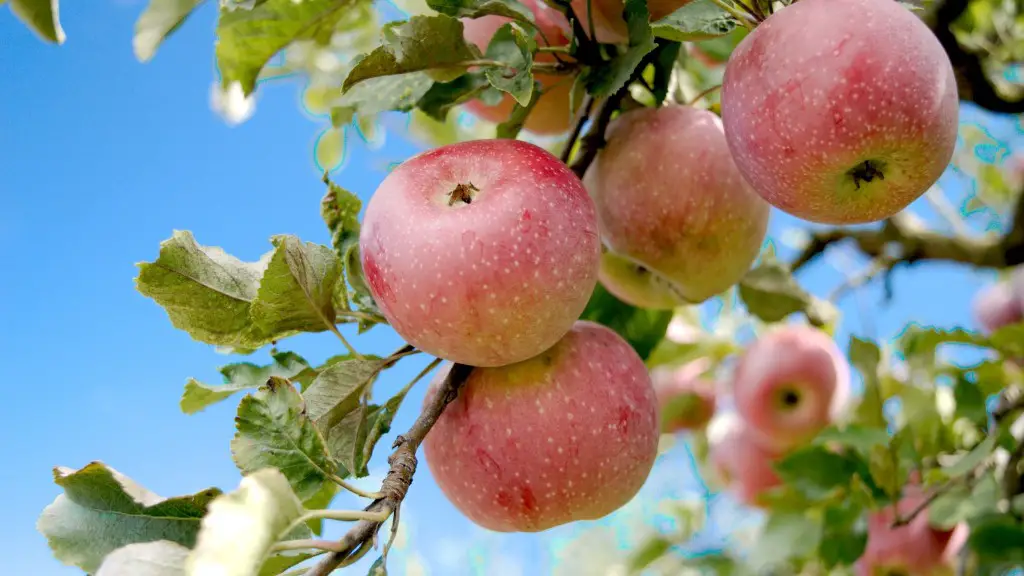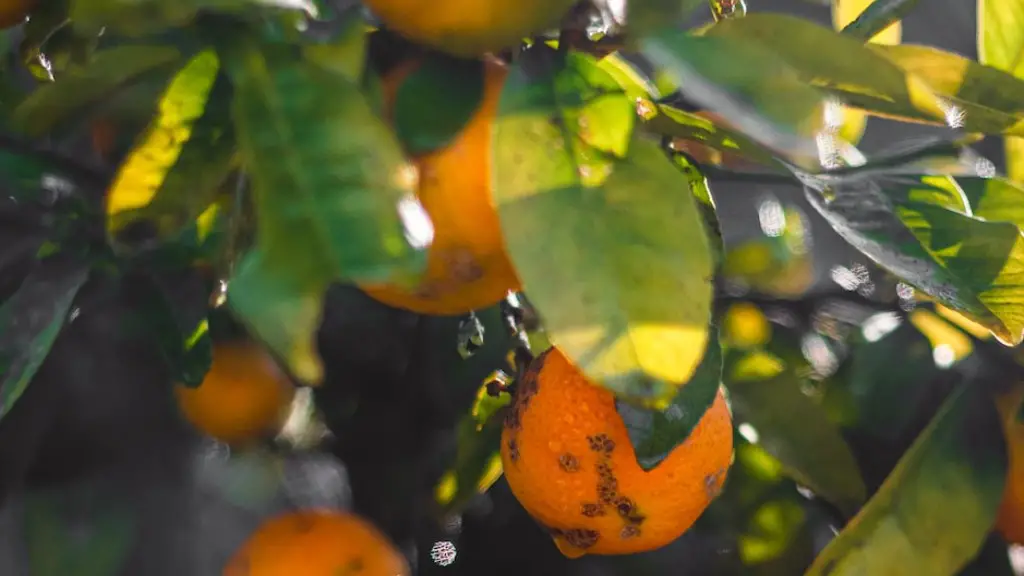Planting Avocado Tree for Fruit Production
Avocado trees are becoming increasingly popular backyard ornamentals, but many homeowners are interested in learning how to grow avocados from seed and produce fruit from the tree. It’s a feasible option for those in warm climates, and there are a few steps one must take for success.
The first step to growing an avocado tree is to choose the right variety. Avocado rootsspanersify very quickly in a backyard setting, so it is important to pick a variety that is adapted to the local climate and has the longest growing season. This will improve the chances that the fruit will achieve maturity and produce a good crop.
Once the variety has been selected, the next step is to purchase tree that have been grown from a nursery. The advantage of buying a tree from a nursery is that the tree will be able to bear fruit much faster than one grown from a seed. This can be especially helpful for those in colder climates, as the fruit trees may take longer to mature.
After the tree has been successfully planted in the ground, the next step is to provide the proper care. Fertilizer should be applied to the tree regularly – weekly during its flowering stage, and monthly during the fruiting season. Pruning should also be done annually to keep the tree productive and healthy. And adequate water should be provided during the dry season. An irrigation system may be necessary to ensure adequate moisture is provided to the tree.
In addition to these maintenance steps, it is important to provide the tree with proper nutrition. A balanced fertilizer that is high in nitrogen, potassium, and phosphorus can help to ensure the tree produces good fruit by stimulating growth and aiding in the production of large, sweet fruits. Additionally, mulching is recommended, as it will help to retain moisture in the soil, keep weeds out of the area, and provide essential nutrients for the tree.
Finally, to ensure a productive harvest, timing is key. Avocado trees flower from winter to early spring, and the fruit is usually ripe from late summer to early fall. Harvesting fruits too early can negatively affect their flavor, while harvesting too late can cause them to rot. It is important to wait until they are at their peak ripeness before harvesting avocados.
Harvesting Avocado Fruit
When it comes to harvesting avocados, timing is key. Avocados are known for ripening off the tree, and it is important to allow them time to reach their peak of ripeness before picking them. Depending on the variety, the fruit can ripen anywhere from 6-14 months after flowering. Each variety has different ripening times, so it is important to be familiar with this before harvesting.
When it is time to harvest, the avocado should be carefully cut from the tree. Great care must be taken not to damage the tree during the harvesting process, as this can impair the tree’s ability to produce future crops of fruit. Additionally, it is important to wear gloves when harvesting, as the skin of an avocado could cause irritation to the skin.
Once theavocado has been removed from the tree, it must be handled with care. Avocados do not handle extreme temperatures well and should be kept away from extremely hot or cold temperatures. Avocados should also be harvested on the day of consumption, as they cannot be stored for long periods of time. This is especially true of fruits that are ripe, as they will begin to rot quickly when exposed to air.
Harvesting an avocado from a tree is an exciting experience, and with proper care and maintenance, a homeowner can enjoy the fruit of their labor for many years to come.
Prevent Pests & Diseases for Avocado Tree
Aside from proper care and maintenance, it is important to take steps to protect the avocado tree from pests and diseases. Avocado trees are susceptible to a variety of pests and diseases, some of which can cause devastating damage to the tree and fruit.
The first step in protecting the tree is to use a high quality fungicide or pesticide to prevent and control pests. Fungicides are especially important, as they can help to prevent the spread of lethal fungus such as Phytophthora root rot. Pesticides should also be used, as they can help to control and reduce the population of common pests such as beetles and ants.
In order to further protect the tree, it is important to regularly inspect the tree for signs and symptoms of pests and diseases. Any signs of damage should be reported to a professional horticulturist immediately. Additionally, it is important to keep the tree pruned and the area around the tree free of debris, as this can attract pests.
Finally, it is important to rotate the crops on the tree regularly in order to minimize the chances of pests and diseases attacking the tree. This can be done by planting different varieties of avocados on the same tree, as each variety may have slightly different growth requirements, thereby reducing the chances of the same pests and diseases attacking the tree.
Ensuring the Right Temperature for Avocado Tree
In order for an avocado tree to be productive, it must be planted in a location that has the right temperatures. Avocado trees will require a consistent temperature of between 55-85°F in order to produce fruits. Additionally, the tree should not be exposed to frequent temperature fluctuations, as this can affect the overall health of the tree.
In order to ensure the tree gets the optimal temperature, it is important to consider the local climate when selecting the planting spot. Avocado trees prefer areas that are slightly cooler than the rest of the landscape, as this can help to protect it from the heat of the summer. Additionally, it is best to plant the tree in an area that gets plenty of sun, as this will help to promote optimal growth and fruit production.
Additionally, care must be taken to protect the tree from cold temperatures. When temperatures drop too low, the tree may become dormant and cease to produce fruit. As a precautionary measure, it is a good idea to set up some form of windbreak around the tree to reduce the chances of cold winds damaging the tree.
By following these tips and taking the time to research the right temperature requirements for the tree, those looking to grow an avocado tree can increase their chances of producing a successful crop of fruit.
Pruning Avocado Tree
An important part of growing an avocado tree is to make sure it is pruned regularly in order to stay healthy and productive. Pruning avocado trees is important because it helps to minimize pests and diseases, reduce shading, and provide adequate airflow between the tree’s branches. Additionally, pruning will help to encourage overall vigor of the tree and improve the overall quality of the fruit.
In addition to the regular pruning, it is also important to pay attention to the overall shape of the tree. Avocado trees should be pruned into a narrow V-shape, as this will help to promote air circulation and reduce the chances of disease and pests. Additionally, it is important to regularly thin out weak and diseased branches in order to give the healthy branches more room to grow.
When pruning the tree, it is important to use the right tools and techniques. Pruners should be sharp and kept clean at all times, as this will help to prevent the spread of disease. Additionally, it is important to make sure to only prune away healthy growth, as this will promote vigorous growth in the future.
Finally, it is important to remember that pruning is an ongoing process – it should not be done abruptly, and should be repeated throughout the year to ensure the tree remains healthy and productive.
Fertilizing the Avocado Tree
In addition to pruning, regular fertilization of the avocado tree is essential for good health and bountiful fruit production. Regular fertilization will ensure the tree has all the essential nutrients it needs to flourish.
Ideally the tree should be fertilized at least once a month during the fruiting season, and fertilizers should be chosen based on the crop’s nutrient requirements. Different types of fertilizers are available, and each type has a specific purpose. For instance, organic fertilizers are generally seen as the best choice for avocado trees, as they are rich in natural nutrients and can promote healthy and vigorous growth.
When applying the fertilizer, it is important to ensure that it is evenly distributed throughout the root zone of the tree. Additionally, it is important to avoid over-fertilization, as too much fertilizer can lead to nutrient burn and damage the tree. Instead, it is best to use the recommended amount of fertilizer to ensure the tree receives the optimum amount of nutrients.
By following these tips, homeowners can ensure their avocado tree receives the nutrients it needs to produce a bountiful crop of fruit.
Providing Shade & Protection for Avocado Tree
The final task of an avocado tree’s care is to provide it with adequate shade and protection. This is especially important in areas with intense sunlight or extreme temperatures, as prolonged exposure to the sun or cold temperatures can damage the tree and reduce its fruit production.
In order to provide adequate shading, a trellis or sun shade can be installed over the tree. This will help to block out the direct sunlight and keep the tree in the light but not in the heat. Additionally, it is important to regularly inspect the tree for signs of sunburn or frost damage, as these can adversely affect fruit production.
Pest control is also essential for protecting the avocado tree from damaging insects. The best way to deter pests is to eliminate potential sources of food and hiding places for insects. Pesticides can also be used, however, it is best to use organic pesticides rather than chemical-based ones. This will help to minimize the risk of damaging the tree and surrounding landscaping.
By taking the necessary steps to provide shade and protection, a homeowner can ensure their avocado tree has the best chance of producing a good crop of fruit.




